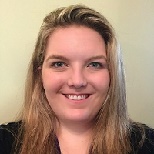
 Special to the Philanthropy Journal
Special to the Philanthropy Journal
By Abigail Durham and Kyle Leidheiser
As a land-grant university, NC State is committed to providing students hands-on, highly-engaged learning opportunities AND to providing research that is of direct, practical use to the fields we work in. Philanthropy Journal proudly presents this series of evidence-based resource articles developed by Dr. Amanda J. Stewart‘s masters level Management of Nonprofit Organizations class. These articles represent a perfect overlap of engaged learning and practical research.
For a nonprofit to be successful and sustainable, it needs to have a stellar board. Most boards, however, fall short of that. According to Larcker, “too often [nonprofit] board members lack the skill set, the depth of knowledge, and the engagement required to help their organizations succeed.”1 Many people join boards so that they can have a positive effect on their community, but they don’t understand what is necessary to be an effective board member. There are some resources that can improve board effectiveness though, such as board size, diversity, and effectiveness training. These insights were gleaned from Kristen Hoyle- a long-time CPA and experienced nonprofit auditor- who is or has served on six boards of vastly different nonprofits.
An effective nonprofit board of directors provides functional oversight and strategic direction to the organization. Board members must exercise duty of care, loyalty, and obedience.2 Duty of care requires board members to act as any reasonable and judicious person would, such as working outside of the board meetings, meeting regularly, and asking questions when necessary.3 Next, a nonprofit organization’s board member should practice a duty of loyalty, not acting for self-gain at the expense of the nonprofit.4 A board member shouldn’t take advantage of an opportunity afforded to them by the organization. Lastly, the duty of obedience requires a board member to abide by the organization’s mission, bylaws, and policies.5 Upholding these three duties, however, is not enough for a board to be truly great.
Optimal board size and board diversity improve the effectiveness of boards in doing their job. For example, in North Carolina, “law requires only one board member, but best practices recommend that you have no fewer than five; seven or more are preferable.”6 To a degree, more members on the board is preferable. Greater diversity of thought and viewpoints appear. There is no stated maximum number of allowed directors.7 However, after approximately fifteen members, the board gets difficult to handle.3 At that point, things just get unruly. The board should also be diversity. The diversity can be in age, sex, race, etc.3 The diversity in the board can also be diversity in profession. For example, a trade association such as the North Carolina Association of Certified Public Accountants (NCACPA) seeks out lawyers, practicing CPAs, and educators.3 For example, Ms. Hoyle brings something different to the table of a board than an affluent community leader; she can help better interpret financial statements (or even prepare them), whereas the community leader may have more knowledge of the community or sway with donors. This diversity helps boards avoid group-think, where all the members think similarly and simply agree on matters. A Princeton study found that diverse boards lead to increased operational efficiency, perhaps through the inclusion of new skills, additional network linkages, and groupthink disruption.8 The objective of board diversity is to ensure that organizational matters are fully deliberated and thoughtfully discussed, rather than easily agreed upon.
No matter the size or composition of the board of directors, training each and every new board member assists board members in fulfilling the duties and performing the work required of board members. According to Ms. Hoyle, “A good effective board has training for every new member”.3 The training that she was referring to was board effectiveness training, which is offered by organizations like NC Center for Nonprofits, BoardSource, and the National Council of Nonprofits. For example, Board Source has a governance education program offered online and in-person that teaches board structure and promising practices, the roles and responsibilities of board members, financial oversight, and legal oversight.9 Board effectiveness training can also inform board members of their role in fundraising, monitoring, and accountability. Plus, it can lead to more time-efficient board meetings and better relationships with staff members. However, this training can also take the form of guest speakers, thought-provoking articles or case studies, or board retreats.10 It is also important to remember that this training should not be a one-off experience; it should be ongoing in order to create an effective board. Plus, beyond producing stronger board oversight, there is growing evidence that board training activities allow board members to be happier and more productive.11 Board training creates a better internal environment at a nonprofit, enabling a stronger and more stable organization.
Strong and effective boards do not develop overnight and they do not remain indefinitely. Developing a strong and diverse board and learning to be an effective board member are processes, and they are continuous processes due to the fact that boards, organizations, and the external environment are always shifting. However, when these processes are executed well, they strengthen nonprofit governance and better serve communities.
References
- Larcker, David F et al. “2015 Survey on Board of Directors of Nonprofit Organizations.” Stanford Graduate School of Business, 2015. Web. 14 June 2017. https://www.gsb.stanford.edu/faculty-research/publications/2015-survey-board-directors-nonprofit-organizations
- Ebrahim, Alnoor. “Chapter 4: The Many Faces of Nonprofit Accountability.” The Jossey-Bass Handbook of Nonprofit Leadership and Management. Ed. David Renz and Robert Herman. John Wiley & Sons, Inc., 2016. 102–123. Print. Pg. 106.
- Hoyle, Kristen. Personal interview. 6 June 2017.
- How to Start a 501(c)(3) Nonprofit Organization- Information Packet. N.C. Center for Nonprofits, 2012. Print. Pg. 10.
- Renz, David O. “Chapter 5: Leadership, Governance, and the Work of the Board.” The Jossey-Bass Handbook of Nonprofit Leadership and Management. Ed. David Renz and Robert Herman. John Wiley & Sons, Inc., 2016. 127-166. Print. Pg. 129.
- How to Start a 501(c)(3) Nonprofit Organization- Information Packet. N.C. Center for Nonprofits, 2012. Print. Pg. 3.
- Hopkins, Bruce R, and Virginia C Gross. “Chapter 2: The Legal Framework of the Nonprofit Sector In the United States.” The Jossey-Bass Handbook of Nonprofit Leadership and Management. Ed. David Renz and Robert Herman. John Wiley & Sons, Inc., 2016. 43–79. Print. Pg. 59.
- “Corporate Board Diversity: An Empirical Study of Its Effects on Firm Financial Performance.” Princeton University: Department of Economics, 13 Apr. 2016. Web. 22 June 2017.
- “Certificate of Nonprofit Board Education.” BoardSource, 2017. Web. 21 June 2017. https://boardsource.org/resources-solutions/leadership-certificate-programs/certificate-nonprofit-board-education/
- “Leading With Intent: A National Index of Nonprofit Board Practices.” BoardSource, Jan. 2015. Web. 13 June 2017. https://my.boardsource.org/eweb/pdf/LWI-Report.pdf
- Renz, David O. “Chapter 5: Leadership, Governance, and the Work of the Board.” The Jossey-Bass Handbook of Nonprofit Leadership and Management. Ed. David Renz and Robert Herman. John Wiley & Sons, Inc., 2016. 127-166. Print. Pg. 150.
Abigail “Abby” Durham and Kyle Leidheiser are both recent Masters of Accounting graduates from NC State University. Abby is working at an accounting firm in Raleigh, NC. Kyle will work at Ernst & Young in Philadelphia, PA. Both have a strong drive to help their respective communities through nonprofit work and volunteering.





